The Insider
Park it anywhere, but no tents, please
July 10, 2012
Grand Park promises to be a great place for basking, splashing and even dog-walking in the heart of L.A.’s Civic Center. But don’t count on pitching your tent there.
As the park prepares for the grand opening of its first two phases later this month, a push is on to protect the vibrant urban gathering place that’s expected to be a crowd-magnet in park-hungry downtown.
The Board of Supervisors on Tuesday voted to amend the County Code to make it clear that any kind of camping—not just overnight sleeping—is prohibited in county parks under most circumstances.
Not that recreational lounging is taboo. The ordinance makes it clear that it’s fine to unfurl an umbrella, canopy, sunshade, bedroll or sleeping bag on park grounds—just as long as those accoutrements aren’t “used for lodging or living accommodation.”
County officials said the ordinance isn’t aimed at any particular group or activity. And they note that it applies to all county parks, not just the new Grand Park, which is situated near Los Angeles City Hall, where long-running Occupy L.A. encampments caused extensive lawn damage last year. City officials responded by recently enacting a new, widespread ban on tents in city parks.
As it approved the county camping measure, the Board of Supervisors also OK’d expanding sections of the County Code dealing with disturbances and aggressive solicitation in county parks—including a new prohibition barring solicitation within 15 feet of an automated teller machine. (A Bank of America ATM is located near the Starbucks in Grand Park.)
The actions approved Tuesday are part of an ordinance, set to come before the board for final approval on July 17, that places the park under management of the county’s Chief Executive Office.
Dawn McDivitt, who is overseeing the project for the CEO’s office, said that in addition to the ordinance, rules are now being drawn up for the new park—including regulations on skateboarding, potentially a big temptation on the signature, ADA-accessible ramps that will connect the park’s various levels.
She said the park, which will be equipped with security cameras, will receive round-the-clock protection from the Sheriff’s Department and private guards.
“We’re just confident we can have a safe and secure atmosphere that welcomes everybody,” McDivitt said.
Posted 7/10/12
A July debut for L.A.’s Grand Park
June 27, 2012
After two years of construction, the first segment of Los Angeles’ new Grand Park is set to open in the final days of July, a milestone in the revitalization of downtown that will be celebrated with a nationally-promoted dance celebration.
The first two blocks of the park—from Grand Avenue to Hill Street—will be dedicated by civic leaders on Thursday, July 26, near the spectacularly restored Arthur J. Will Memorial Fountain. But the big coming out party is scheduled for Saturday, July 28, with a public inaugural coinciding with National Dance Day, an event founded by producer Nigel Lythgoe, who co-created the hit TV show “So You Think You Can Dance.” Tonight, Lythgoe is scheduled to promote the Grand Park dance celebration on his Fox network show.
“The park gives us a lovely setting to encourage all members of the community to get up, move and get healthy at the same time,” Lythgoe said in a statement.
The entertainment will be presented by The Music Center, which was recently selected by the Board of Supervisors to oversee park operations during its first three years. “This event will be a great example of the type of fun, interactive and entertaining activities Grand Park will host for years to come,” said Thor Steingraber, vice president of programming at The Music Center.
Also involved in the opening-weekend events will be The Dizzy Feet Foundation, a non-profit group founded by Lythgoe and other dancers and actors to “support, improve, and increase access to dance education” in the U.S. The entertainment is scheduled to include a performance by Cirque du Soleil. (See full L.A. County announcement here.)
When completed, Grand Park will span four blocks—from Grand Avenue near the Music Center to Spring Street, across from City Hall. The final two blocks of the park are scheduled to open in late summer or early fall. Only in recent days has Grand Park come into full public view as work crews removed the dark sheeting from a warren of chain link fences. Besides the fountain, the park will feature an event lawn, gardens and walking paths.
Posted 6/27/12
Beach chief up for assessor post
June 12, 2012
Santos Kreimann, who has led the county’s Department of Beaches and Harbors since 2009, could become the new temporary head of the controversy-plagued Assessor’s Office under a recommendation made to the Board of Supervisors Tuesday.
Kreimann would take over for Assessor John Noguez, who announced he will be taking a voluntary leave of absence as soon as a temporary successor is in place.
Chief Executive Officer William T Fujioka recommended Kreimann for the position, citing his professional experience, including a stint in the CEO’s real estate division, as well as his managerial acumen.
“I feel that Santos, with his background in real estate and his very strong, to the point of exceptional, management skills, would be an ideal candidate for this assignment,” Fujioka told supervisors Tuesday.
The board is expected to take up Fujioka’s recommendation next week. If supervisors agree that Kreimann is the best choice, he would be appointed by Noguez to run the department in his absence. While the assessor himself must make that appointment, Noguez has said he preferred to stay out of the selection process to “remove any possible concerns” about his involvement.
Noguez’s leave of absence comes as he and members of his staff are being investigated by the District Attorney’s office on allegations of preferential treatment of some property owners. In announcing his decision to go on leave earlier this month, Noguez urged supervisors to designate “a highly qualified person” he could appoint to manage the office in his absence.
In a statement Tuesday afternoon, he asked his staff to support Kreimann while he is on leave, adding: “He will have my full authority to manage and oversee the department.”
If Kreimann moves over to the Assessor’s Office on the temporary assignment, Beaches and Harbors will be run in the interim by its three assistant directors, Fujioka told supervisors.
Kreimann, who said he was surprised to be tapped for the assessor’s post, said it’s unclear how long the assignment might last.
“It could be a year or three months; it could be all the way into 2014,” he said.
Whatever the timetable, he said, it will be important to review policies and procedures and make adjustments, if necessary, to prevent “bad things happening.” Another top priority: lifting employees’ morale.
“They’ve been beat up. And I would imagine they’ve been embarrassed to a certain extent,” Kreimann said. “I think it’s important for anyone who goes in there, whether it’s myself or someone else that goes in, to give them some confidence that they’re doing the right things.”
It’s all about making sure the public can believe in the integrity of the office, he said.
“Ultimately it all translates into making sure that the public trust is regained, and that people have confidence in the employees and the work we do in the assessor’s office.”
Kreimann, 47, a 22-year county veteran, lives with his wife and three daughters in Whittier. For him, the saying “county family” is more than just an expression—he has a brother in the Chief Executive Office and a sister in the department of Human Resources.
And when the “family” needs help, he said, there’s really one way to respond.
“When Bill approached me, I felt that I had to do it to help the county as a whole,” he said. “We’re all one big family.”
Posted 6/12/12
Assessor to take leave of absence
June 1, 2012
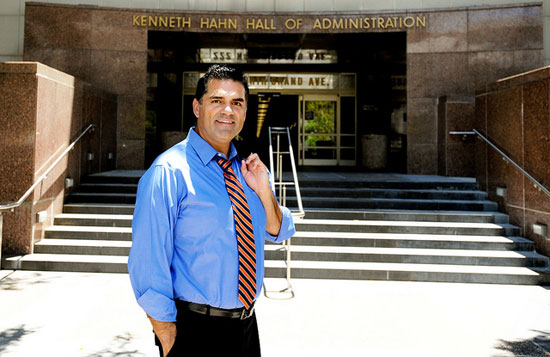
Noguez says he will begin a voluntary leave as soon as a Chief Deputy Assessor is named to run the office.
Los Angeles County Assessor John Noguez, buffeted by allegations that he gave preferential treatment to some property owners, announced today that he will take a leave of absence from his position as soon as a temporary successor can be appointed.
In a June 1 letter to the Board of Supervisors, Noguez said he is taking the voluntary leave “in the interest of restoring public confidence in the professionalism, integrity, and impartiality of the Assessor’s Office.”
“I do not take this decision lightly,” he wrote. “It is my sincere hope that the leave of absence will allow the Assessor’s Office to adhere to its mission during this important time.”
Noguez and members of his staff currently are being investigated by the D.A.’s public integrity unit. In his letter, Noguez said he and his office are cooperating with the probe.
Since the position of Chief Deputy Assessor currently is vacant, Noguez asked supervisors to designate “a highly qualified person” for the post to manage the office while Noguez is on leave. Noguez would actually make the appointment, but said in his letter that he preferred to stay out of the selection process in order to “remove any possible concerns” about his involvement.
Board of Supervisors Chairman Zev Yaroslavsky has introduced a motion directing the county’s Chief Executive Office to come up with candidates for the position. The motion, to be considered next week, calls for the board to discuss the candidates and recommend one of them for the job during open session.
In a statement, Yaroslavsky said Noguez made the right call in taking the leave of absence.
“Assessor Noguez’s decision to step aside allows for a new person to come in and restore order and integrity to an office that is currently shrouded in a cloud of uncertainty,” Yaroslavsky said. “His decision is in the best interest of the county, the Assessor’s Office, and the taxpayers.”
Posted 6/1/12
Don’t just vote—work at the polls
May 31, 2012
Venice is desperately seeking poll workers. So is Westwood. Ditto for Beverly Hills, Calabasas, Mar Vista and a host of other communities.
With the California primaries less than two weeks away, Los Angeles County Registrar-Recorder/County Clerk Dean Logan has put out a call for democratically-minded citizens to man the ballot boxes during the June 5 elections. Some 36 cities in Los Angeles County are short of volunteers, including Los Angeles, where precincts in more than 50 ZIP codes have reported shortages of two or more poll workers. (Click here and scroll down for a complete list of precincts that need workers.)
Many of the shortages are in high turnout areas of the Westside, though recruiting calls have gone out from Altadena to Westlake Village. Bilingual help is especially needed.
“Without poll workers, elections cannot function,” Logan says, noting that community volunteers “are essential to fair and open elections.”
Up to 25,000 poll workers are recruited to work in their respective election precincts each time the county holds a major election. Any registered voter who is over 18 and a resident of Los Angeles County can volunteer.
Workers are on duty from 6 a.m. to 9 p.m., setting up and closing the polls and assisting voters. They receive a stipend of up to $105.
Interested volunteers should apply by June 4. Additional information is available here and here. To apply, visit www.lavote.net or call 1-800-815-2666 (Option 7). Online application forms are also available here.
Posted 5/24/12
This summer’s “grand” opening
May 29, 2012

This section of Grand Park, featuring the Arthur J. Will fountain and green-roofed Starbucks, will open first.
The newly named Grand Park in downtown Los Angeles edged closer to reality this week, with the selection of the Music Center as operator of the 12-acre site, now scheduled to begin opening in late July or early August.
The park, which until this week had been called Civic Center Park, promises to dramatically reshape a downtown experience that, for decades, has offered little in the way of outdoor recreation or entertainment. When completed, Grand Park will stretch four blocks—from the Music Center to City Hall—and will feature, among other things, an event lawn, gardens, walking paths and spectacularly renovated fountain (see video here).
Project Manager Dawn McDivitt of the county’s Chief Executive Office said the park’s opening will be phased in throughout the summer. The park’s northern end, which includes the Arthur J. Will Memorial Fountain below Grand Avenue, should be opened in roughly two months. McDivitt said the strategy of staggered openings will give the event lawn at the park’s southern end time to take root—and for the county to create excitement around the unveiling of each successive stage.
With the first opening only weeks away, the Board of Supervisors on Tuesday voted unanimously to contract with the Performing Arts Center of Los Angeles—more commonly known as the Music Center—to oversee park operations for the first three years. That includes lining up a diverse slate of musical, theatrical and educational programming.
“We look forward to working with the county to create a vibrant and welcoming park in the center of downtown,” Music Center Chief Executive Officer Stephen D. Rountree said after the board’s vote. He said that no firm programming decisions have been made but that he expects year-round activities ranging from music festivals to farmer’s markets.
The supervisors also voted to change the name to Grand Park. Planners were worried that the phrase “civic center” was not sending a clear message. “We didn’t want it to sound too governmental or too institutional,” McDivitt said. “We wanted the name to reflect the park’s aspirations.”
The park is part of the larger Grand Avenue project, a massive commercial and residential development that has stalled with the faltering economy. The developer was required to provide $54 million upfront toward the park, thus ensuring its completion.
Posted 5/26/12
Voter registration’s a click away
May 16, 2012
You go online to post your vacation photos, buy birthday gifts and share your relationship status.
But if you want to use the Internet to register to exercise one of the most fundamental rights of American citizenship—casting a vote—you’ve been out of luck.
Until now.
The county is embarking on a project with the California Secretary of State to make online voter registration a reality here before the November presidential election.
The $270,873 county program, paid for by federal funds passed along by the state, is part of the California Online Voter Registration Project that seeks to make registration easier for the 9 million Californians—39% of the eligible population—who aren’t currently signed up to vote.
While it won’t change the requirement mandating registration 15 days before an election, it will make it easier for those who push it right up to the wire—like the thousands of county residents who tried, and failed, to register to vote in time for the last presidential election.
Updated 10/11/12: County election officials say voter registrations hit a one-month high in September, with 150,000 signing up, compared to 120,000 in the previous record month, September, 2008. The increase is due, at least in part, to the ease of online registration, according to the Registrar-Recorder/County Clerk. The registration deadline for the Nov. 6 election is Oct. 22. Click here to register.
“In 2008, we received literally several thousand registration forms the day after the registration cutoff,” said Registrar-Recorder/County Clerk Dean Logan. “These were people who, at the point that they were engaged and interested in becoming active voters, the system in essence failed them, through an administrative deadline. It’s hard to measure the loss of that. You wonder, will they come back if they didn’t get to vote in the one election where they were interested?”
The system will allow would-be voters to sign their registration forms electronically using e-signatures on file with the DMV. A widget on the county’s voting website, www.lavote.net, will send them to the Secretary of State’s site to register online beginning in late August or early September, Logan said.
The move to electronic registration is part of a broader movement to modernize the nation’s voting systems and remove barriers to electoral participation. Only 10 states, including Washington, Oregon and Arizona, currently have online registration. California is in the process of becoming the 11th, under Senate Bill 397 passed last year. Los Angeles, Orange and Trinity are the three counties that will be pioneering the process for their respective voting systems, before the whole state follows suit.
In a letter to the Board of Supervisors, which this week approved the county’s participation in the program, Logan and county Chief Information Officer Richard Sanchez said that younger voters between the ages of 18 and 25 are most likely to take advantage of the online registration option.
But Logan said it will also make it easier for anyone who moves within the state to keep their voter registration up to date.
Posted 4/17/12
Assessor hit for faulty forecasts
May 16, 2012
 When it comes to forecasting the rise and fall of home prices, the Los Angeles County Assessor’s Office needs to get its house in order.
When it comes to forecasting the rise and fall of home prices, the Los Angeles County Assessor’s Office needs to get its house in order.
That was the conclusion of a team of consultants hired by the county to investigate how the assessor came to produce two widely different predictions of money that would be generated by this year’s property taxes. In one fell swoop, the amount of growth forecast for property values plunged from $18.6 billion in December to $5.1 billion in April—an unwelcome surprise for financially-strapped local government entities, including the county, that rely on the funds.
An irate Board of Supervisors last month called the disparity shocking and unprecedented, and ordered a top-to-bottom audit of the office run by Assessor John Noguez, who already was under fire for allegedly giving special treatment to certain property owners, an accusation he has denied.
On Tuesday, the first phase of that audit was presented to the supervisors, and it did not paint a flattering portrait of assessor operations.
Consultants from the firm Rosenow Spevack Group found numerous flaws in how the two forecasts were reached—from failing to account for home price volatility at the close of last year to making errors in math. RSG, which was retained by the county’s auditor-controller, concluded that the December forecast of 1.77 percent revenue growth was too high and that the April forecast of .49 percent growth was too low.
Based on more complete information, RSG and the Assessor’s Office now agree that rate of growth in property tax revenue will be closer to 1.14%.
The most significant forecasting error, according to RSG, was the assessor’s failure to recognize, and account for, an unexpected decline in value for hundreds of thousands of parcels in the final quarter of last year. The assessor’s office had based its December forecast on information generated between January and September 2011, when prices were relatively stable, without examining available sales data or economic analyses for the latter part of the year. The result: an overly optimistic forecast, Jim Simon of RSG told the board.
Mistakes were also made in the April forecast, he said, including an overstatement of the estimated drop in the property tax roll because of “a calculation error.”
In a letter accompanying RSG’s report, Auditor-Controller Wendy Watanabe noted that, during the past several years, the assessor’s office has been hit with numerous retirements in key management roles, “which has resulted in significant turnover in the staff who prepare the roll forecasts.” Watanabe’s office is now examining the management of the assessor’s office, including whether it has been hurt by the controversies surrounding Noguez, who, along with other members of his staff, are under investigation by the District Attorney’s public integrity unit.
That a controversy over forecasts could even flare seems unique to Los Angeles government.
According to RSG, it appears that no other assessor in the state is producing multiple forecasts like Los Angeles. For 20 years, the L.A. County assessor has been producing three of them as a way to help the county’s Chief Executive Office prepare the county’s preliminary budget. Under state law, an assessor is only required to produce an annual forecast in May, if asked to do so by a governing body of a taxing agency.
“Their primary function is to be assessors” evaluating properties, Simon said, “not forecasters.”
Still, with the likelihood that multiple forecasts in Los Angeles County will continue, Simon’s team suggested a number of ways for the assessor to increase accuracy. They include: using the most current data available; evaluating properties on a more geographic-specific level, obtaining input from economists and other experts, and providing a range of values in forecasts, instead of settling on a specific number.
Posted 5/16/12
E-stockpile found at assessor’s office
May 3, 2012

Assessor's equipment shared space in this storage facility with the landlord's car, bikes and mattresses.
As Los Angeles County was tightening its belt in recent years, its assessor’s office was sitting on a cache of more than a half-million dollars’ worth of brand-new electronics equipment it had stockpiled but never used, a newly-released county audit found.
The auditors discovered some $654,000 worth of never-used equipment, ranging from laptops to laser jet printers, languishing in storage at the Hall of Administration after it was purchased between fiscal years 2001-2 and 2009-10.
“A lot of the equipment was still brand-new, still sealed with the original vendor tape,” said David Aldava, an intermediate accountant-auditor who was part of the team that looked into technology in the assessor’s office.
Aldava’s team also made another unusual discovery: The department had improperly stashed pallets loaded with other computers, printers and tech equipment—some still functioning, some headed to the junk pile—in an unlocked, leased storage facility in Signal Hill, where the county-owned equipment shared space with the landlord’s car, bicycles, refrigerators, mattresses and even a bar sign or two.
The equipment ended up in the storage facility—next to the assessor’s South District office—after employees initially told auditors that the department had no surplus electronics. Eventually, though, the staff “told us that they had previously moved the surplus items from other locations to the storage building in an attempt to hide the equipment from us,” according to an April 13 report from Auditor-Controller Wendy Watanabe.
In a response to the audit filed last month, the department concurred with virtually all of the auditor’s 25 recommendations, most aimed at tightening accountability, record-keeping and security and ensuring that IT equipment is purchased only when needed.
Assessor’s spokesman Louis Reyes said the office is “fully cooperating” in correcting problems uncovered in the audit. “The assessor wants to address these concerns fully,” he said.
Assessor John R. Noguez was elected in November, 2010, and was not in charge during the period in which the new equipment was stockpiled, Reyes noted.
The audit comes as a separate, broader review, ordered by the Board of Supervisors, is underway to examine how the assessor’s office operates across the board. The office has come under fire for allegedly granting preferential treatment to some property owners. Noguez also shocked the supervisors recently when he disclosed a large, unprecedented disparity in property tax projections that could leave the county with a $50 million hole in its budget.
The technology audit, conducted last year and provided to the Board of Supervisors last month, offered its own set of unexpected discoveries.
“This warehouse issue really took us by surprise,” Watanabe said—especially when employees initially refused to let the auditors into the Signal Hill facility, claiming it would take a month to reach the landlord and get his permission for access. “That really piqued our interest.”
It turned out that an effort was underway, apparently, to thwart auditors from discovering an abundance of surplus equipment, which is not allowed under county policy. “They started to dump everything to Signal Hill…We finally did get in and saw stacks and stacks of used computers,” Watanabe said. “They didn’t want us to see it, to cover up that they’d initially lied.”
Even as the used computer equipment was piling up, the department was also acquiring the stacks of new and unneeded electronics—apparently part of a use-it-or-lose strategy of spending IT funds at the end of fiscal years rather than allowing unspent money to revert to the Chief Executive Office’s overall county budget, the audit found.
Beyond the cost of the equipment itself, the department overpaid by not waiting to buy the items until they were actually needed. Because technology prices tend to decrease over time, the assessor’s office ended up paying at least $93,000 more than it should have, the audit found.
Despite the huge build-up in excess tech equipment being stored, the assessor’s office still had plenty of electronic devices to go around, it appears. The audit found that 324 of the department’s 1,425 employees had at least two computers assigned to them—and 57 had three or more.
“To us, this is just ridiculous,” Watanabe said. “There’s really no business reason to justify why someone would have three or more computers.”
The employees themselves admitted as much to county auditors when asked about those second or third computers.
“Oh, yeah, it’s just sitting in my trunk,” some said when questioned about laptops they’d been issued, according to Watanabe.
Having an unused laptop lying around the house or car has hidden costs, too, Watanabe said, since the county pays virtual network fees of $600 a year for each employee who logs onto the network from outside the office—whether a device is being used or not.
Then there were security lapses. The audit said that the assessor’s department disposed of some surplus equipment without first erasing county information from the devices’ hard drives. It also found that 22% of the department’s computers didn’t have any working anti-virus protection.
Although Watanabe said no fraud was uncovered, the audit found a system of lax controls and a cavalier attitude toward safeguarding county property.
As for the surplus devices stashed in Signal Hill, those have all been junked or donated since the audit, or will be soon, according to the department. And employees in the assessor’s office have begun working their way through that unused stockpile of new equipment.
Posted /3/12







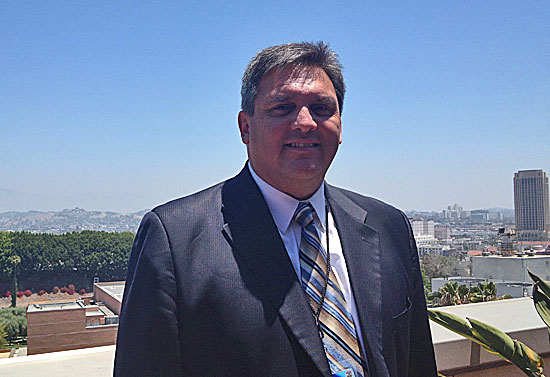
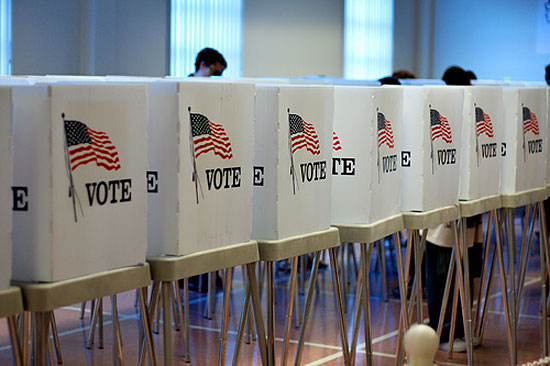

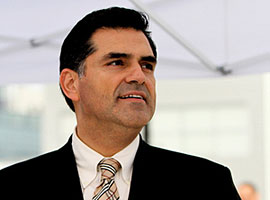
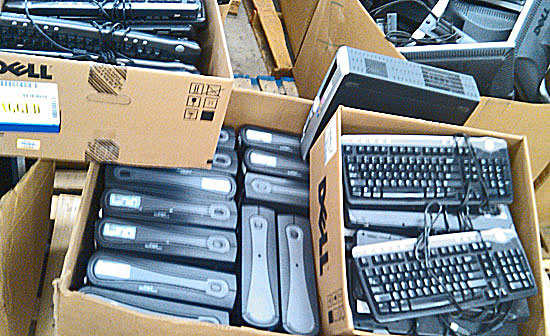







 405 bridge work causes a stink
405 bridge work causes a stink
